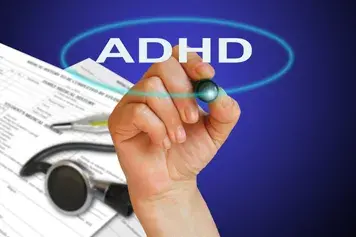Medical coding services provide a great assistance for physicians dealing with complex psychic disorders. Attention deficit hyperactivity disorder (ADHD or ADD) is one of the most common childhood disorders and can continue through adolescence and adulthood. Symptoms include difficulty staying focused and paying attention, difficulty controlling behavior, and hyperactivity (over-activity). This common neurobehavioral childhood disorder can profoundly affect the academic achievement, well-being, and social interactions of children. According to CDC, about 2 million of the more than 6 million children with ADHD were diagnosed as young children aged 2-5 years. Specialists involved include clinical psychologists, neuropsychologists, psychiatrists, and other relevantly trained medical doctors. Three types of ADHD are inattentive; hyperactive and impulsive; and combination type that has symptoms of all. Accurate diagnosis and documentation are crucial for error-free billing, which medical billing and coding services can ensure. Clinical documentation must also document the specific type of ADD.
Recommendations for treatment of children and youth with ADHD vary depending on the patient’s age. When left untreated, the condition can have serious consequences. Behavior therapy is an effective treatment that improves ADHD symptoms without the side effects of medicine. However, more young children are taking medicine for ADHD than receiving psychological services, which may include behavior therapy. The American Academy of Pediatrics recommends that healthcare providers first refer parents of young children with ADHD to training in behavior therapy before prescribing medicine.
Diagnosis and Clinical Documentation of ADHD
As per the guidelines of the American Academy of Pediatrics (AAP), making a diagnosis includes documenting that the child has difficulties in more than 1 major setting (e.g., in school and at home). For a clinical diagnosis of ADHD, the child must exhibit six or more symptoms of one of the types of ADHD and also meet each of the following three criteria:
- The symptoms caused problems before the age of 7.
- The behavior is abnormal for a non-ADHD child of the same age.
- The symptoms have lasted longer than six months, and they impair school, work, home life, or relationships in more than one setting.
The primary care clinician should include reports from parents or guardians, teachers, and/or other school and mental health clinicians involved in the child’s care. The primary care clinician should also exclude any other possible cause for the symptoms.
It is recommended that the primary care clinician should:
- Initiate an evaluation for ADHD for any child 4 through 18 years of age who shows or presents with academic or behavioral problems and symptoms of inattention, hyperactivity, or impulsivity.
- Include assessment for other conditions that might coexist with ADHD, including emotional or behavioral, developmental and physical.
- Recognize ADHD as a chronic condition and so, consider children and adolescents with the disorder as those with special healthcare needs.
A clinical summary of relevant historical information is also essential to the diagnosis. In most cases, it is necessary that a diagnostic evaluation has been completed within the past three years.
Documentation to authenticate the diagnosis should also include evidences of early and current impairment. Evidence of current impairment can be a history of the presenting symptoms and a diagnostic interview with information from a variety of sources such as history of presenting symptoms, developmental history, family history for presence of ADHD and relevant medical and medication history, and relevant history of prior therapy.
Accurate Diagnosis Codes
When it comes to ICD-10-CM coding, category F90 includes ADHD as well as attention deficit syndrome with hyperactivity. Specific codes include:
- F90.0 (ADHD, predominantly inattentive type): Some level of hyperactivity-impulsivity may be present in these individuals; however, the majority of symptoms must be associated with inattention. Attention deficient disorder without hyperactivity is also indexed under this code.
- F90.1 (ADHD, predominantly hyperactive-impulsive type): Although some degree of inattention may also be present, these individuals are primarily hyperactive.
- F90.2 (ADHD, combined type): Symptoms of both types are present, but neither is predominant. Most diagnoses of ADHD are this type.
- F90.8 (ADHD, other type): This includes all the hyperkinetic syndromes.
- F90.9 (ADHD, unspecified type or NOS): This code is reported when the physician does not specify the type of ADHD. However, coders usually query for more information before defaulting to this code.
When reported as a principal diagnosis, a code from category F90 groups to MS-DRG 886 (behavioral and developmental disorders). These codes help to convey severity of illness (SOI) and risk of mortality (ROM) of the patient.
Conditions included in the F90 category is indexed in the ICD-10 code book under “disorders,” then “attention-deficit with or without hyperactivity.” This category also includes a note that indicates that these codes may be used regardless of the patient’s age. Note that these disorders generally have onset during childhood, but they may continue through a patient’s life. In some cases, patients may not be diagnosed until adulthood.


